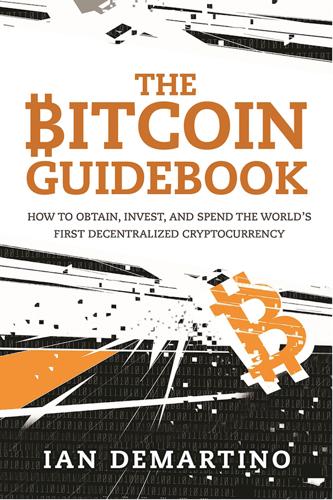
The Bitcoin Guidebook: How to Obtain, Invest, and Spend the World's First Decentralized Cryptocurrency
by
Ian Demartino
Published 2 Feb 2016
Performed by Brian Beamish. Youtube.com/coinigy. April 25, 2015. https://www.youtube.com/watch?v=9Wj9ITc0444. Chapter 15: Altcoin Trading and Pump-and-Dumps Shame on you guys. You can’t advocate for Bitcoin and the transformative changes it enables while also pumping some ridiculous alt-coin. —Blogger Matt Branton, The Branton Bits, April 7, 2014 The same strategies that apply to Bitcoin can be applied to altcoins; the principles are the same. However, altcoins—especially once you get past the top few in market-cap size—are more susceptible to pump-and-dump tactics. Pump-and-dumps are not unique to cryptocurrency.
…
Investing in an altcoin, any altcoin, is at least twice as risky. The investor is betting that the digital currency revolution as a whole will be successful. But he or she is also betting that it will be successful enough to increase the value not only of Bitcoin but also his or her altcoin of choice. As is true in any speculative investment, investing isn’t always the same as believing. There is money to be made in day trading. The long-term holders of various coins, however, are betting that the coin developers and marketers will be able to stay afloat in the sea of other altcoins and offer enough unique features that people will choose it over Bitcoin.
…
Few have the innovation that Namecoin brought to the table in 2011. There are far too many altcoins out there to be viable. My general advice is to stay away from altcoins altogether unless you are really interested in being on the cutting edge. The next few years, most predict, will be a massive bloodletting for altcoins. A lot of them are kept afloat purely by speculative trading and pump-and-dump tactics. They have no use in the long run and therefore are unlikely to survive. The problem is that altcoins are too easy to create. Ars Technica published an article on this topic. Its author, Cyrus Farivar, created and released a coin to illustrate the ease of the process.
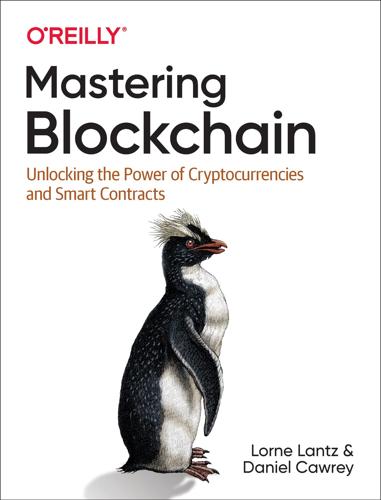
Mastering Blockchain: Unlocking the Power of Cryptocurrencies and Smart Contracts
by
Lorne Lantz
and
Daniel Cawrey
Published 8 Dec 2020
The SV group also wanted the block size to be set at 128 MB and stay at that number. The differences proved irreconcilable, leading to another hard fork. Altcoins The term altcoin is usually used to refer to forks of the Bitcoin Core software. The early altcoin frenzy began in 2011, after Bitcoin had gained some degree of traction, had gone through its vulnerability attack, and developers had begun to trust the technology. Here are some of the earlier altcoins: Ixcoin This fork was an early premined altcoin (see the next section for more on premining). After generating 580,000 coins ahead of time, the founder(s) launched Ixcoin on message boards and mailing lists with the idea that the original developer(s) would generate a lot of value for the existing premined coins.
…
Index A ABI (application binary interface), Interacting with a smart contract addressesBitcoin, Public and Private Keys in Cryptocurrency Systemsassociating with an identity, The Evolution of Crypto Laundering generating with public/private keys, Public and Private Keys in Cryptocurrency Systems in UTXO transaction model, The UTXO Model Ethereumfor smart contracts, Deploying a smart contract stealth addresses on Monero, How Monero Works whitelisting, Counterparty Risk adjustable blocksize cap (Bitcoin), The Bitcoin Cash Fork adoption of blockchain, The Future of Blockchain airdrops, disbursement of cryptocurrencies via, Airdrops airgapped computers, Counterparty Risk altchains, Understanding Forks altcoins, Understanding Forks, Altcoins-Counterpartyearlier, sample of, Altcoins Litecoin, Litecoin other, More Altcoin Experiments Amazon Quantum Ledger, Blockchain as a Service analysis, Analysis-Hunting for Bartanalytics services for cryptocurrency blockchains, Analytics fundamental cryptocurrency analysis, Fundamental Cryptocurrency Analysis-Tools for fundamental analysistools for, Tools for fundamental analysis Tullip Mania or the internet, Tulip Mania or the internet?
…
Gox-Bitfinex multisignature wallet contracts, Multisignature Contracts-Multisignature Contracts N Namecoin, Altcoins naming services, Naming Services network hash rate, Block discovery networkscentralized versus decentralized versus distributed design, Distributed Versus Centralized Versus Decentralized Corda, The Corda networknodes having visibility into transactions, Corda ledger DAG design, DAGs Libra's centralization challenge, Novi transactions confirmed by network on Bitcoin, Transaction life cycle New York Department of Financial Services (NYDFS), FinCEN Guidance and the Beginning of Regulation NiceHash, NiceHash Nightfall blockchain, Nightfall nodes, Distributed Versus Centralized Versus Decentralizedin Avalance consensus mechanism, Avalanche Libra, validator and full nodes, How the Libra Protocol Works Lightning, Lightning nodes and wallets in proof-of-stake networks, Proof-of-Stake nonces, The mining processin block discovery on Bitcoin, The mining process running out of nonce space or overflow, The mining process in Satoshi Nakamoto's whitepaper, The Whitepaper noncustodial wallets, Wallet Types: Custodial Versus Noncustodial(see also wallets) nonfungible tokens, Fungible and Nonfungible TokensERC-721 standard for, ERC-721 Nothing-at-Stake problem, Proof-of-Stake Novi wallet, Novi NuBits, NuBits NXT blockchain, NXT O oligarchical model dominating the web, Web 3.0 Omni Core, Understanding Omni Layerlimitations of, Deploying and Executing Smart Contracts in Ethereum Omni Layer, Understanding Omni Layer-Adding custom logicadding custom logical operations to Bitcoin, Adding custom logic-Adding custom logic how it works, How Omni Layer works limitations of, Deploying and Executing Smart Contracts in Ethereum technical stack, overview of, Understanding Omni Layer Tether project built on, Tether opcodes, Gas and Pricing Open Systems Interconnection (OSI) model, The More Things Change operating system platform (EOS), Blockchains to Watch operators, ERC-777, ERC-1155 Optimistic Rollups, Other Altchain Solutions, Lightning nodes and wallets options, Derivatives OP_RETURN field, Adding custom logictranslation of metadata in, Adding custom logic Oracle, Blockchain Platform, Blockchain as a Service oracles, Important Definitionsmanipulation in Fulcrum attack, The Fulcrum Exploit order books, Order Booksthin, slippages and, Slippage over-the-counter (OTC) market, Slippage P paper wallets, Wallet Type Variations Parity, Parity Parity hack (2017), Parity participants, Participants passwordssecurity vulnerabilities, Zero-Knowledge Proof Thinbus Secure Remote Password protocol, Zero-Knowledge Proof pay-to-play, Tools for fundamental analysis payment channels, Lightningnode dropping or losing connection to, Lightning nodes and wallets opening by sending funding transaction, Funding transactions withdrawing funds from, Off-chain transactions payment systemsLibra, Borrowing from Existing Blockchains permissioned ledger uses of blockchain, Payments physical cash versus digital, Electronic Systems and Trust Permacoin, Alternative methods permissioned ledger uses of blockchain, Permissioned Ledger Uses-Paymentsbanking, Banking central bank digital currencies, Central Bank Digital Currencies gaming, Gaming health care, Health Care Internet of Things, Internet of Things IT systems, IT payments systems, Payments permissioned ledgers, Databases and Ledgers permissionless ledgers, Databases and Ledgers person-to-person trading of cryptocurrency, Evolution of the Price of Bitcoin phishing attacks, Security Fundamentals Plasma implementation of sidechains, Other Altchain Solutions Ponzi schemes in cryptocurrency, Skirting the Laws PotCoin, More Altcoin Experiments precompilation of zk-SNARKs, zk-SNARKs preminingissues with, Litecoin premined altcoin, Ixcoin, Altcoins prices (gas), Gas and Pricing Primecoin, Altcoins privacyand censorship resistance with dapps, Use Cases Ethereum-based privacy implementations, Ethereum-Based Privacy Implementations future developments in blockchains, Privacy information security in decentralizing finance and the web, Privacy-Ring Signaturesring signatures, Ring Signatures Zcash, Zcash zero-knowledge proof, Zero-Knowledge Proof zk-SNARKs, zk-SNARKs insufficient anonymity on Bitcoin, The Evolution of Crypto Laundering paired with scalability, Mimblewimble blockchain protocol, Mimblewimble, Beam, and Grin privacy-focused blockchains, PrivacyMonero, Blockchains to Watch-How Monero Works Zcash, Zcash privacy-focused cryptocurrencies, Privacy-Focused CryptocurrenciesDash, Dash Monero, Monero Zcash, Zcash private blockchain networks, Privacy private blockchains, The Enterprise Ethereum Alliance private keys, Public/private key cryptography(see also public/private key cryptography) products/services, buying or selling, Evolution of the Price of Bitcoin proof-of-history, Alternative methods proof-of-stake, Proof-of-Stake-Proof-of-StakeByzantine fault-tolerant algorithm, HotStuff, Borrowing from Existing Blockchains Casper algorithm in Ethereum 2.0, Ethereum Scaling proof-of-stake velocity, More Altcoin Experiments proof-of-storage, Alternative methods proof-of-work, Block Generation, Proof-of-Work-Confirmationsbit gold's client puzzle function type, Bit Gold block discovery, Block discovery confirmations by miners of blocks to include in blockchain, Confirmations criticisms of, Proof-of-Stake, Ripple and Stellar CryptoNote protocol, Monero Ethereum's Ethash protocol, Ethereum: Taking Mastercoin to the Next Level longest chain rule, The mining process mining process for block discovery on Bitcoin, The mining process mining process on Bitcoin, The mining process in Satoshi Nakamoto's whitepaper, The Whitepaper transaction life cycle, Transaction life cycle use by B-Money, B-Money use by Hashcash, Hashcash X11 ASIC-resistant, Dash protocols, Electronic Systems and Trust pseudonimity, KYC rules and, KYC and pseudonymity public keys, Public/private key cryptography(see also public/private key cryptography) public/private key cryptographyBitcoin's use of, Public/private key cryptography examples of public and private keys, Naming Services generating keys, Generating keys private key storage for digital wallets, Authoring a smart contract private keys for wallets, Private Keys public and private keys in cryptocurrency systems, Public and Private Keys in Cryptocurrency Systems-Public and Private Keys in Cryptocurrency Systems unauthorized access to private key, Bitcoin Transaction Security use in controlling access to personal information, Identity and the Dangers of Hacking pull transactions, Bitcoin Transaction Security, ERC-777 push transactions, Bitcoin Transaction Security, ERC-777 Q Quantum Ledger Database (QLDB), Blockchain as a Service Quorum blockchain, Quorum, JPMorgan R ransomware, CryptoLocker and, CryptoLocker and Ransomware rate limiting, Exchange Risk, Rate Limiting real estate transactions, using tokens on a blockchain, Tokens on the Ethereum Platform recovery seed, Recovery Seed recursive call vulnerability, Forking Ethereum and the creation of Ethereum Classic regulationof cryptocurrency exchanges, Jurisdiction FATF and the Travel Rule, The FATF and the Travel Rule FinCEN guidance and beginnings of, FinCEN Guidance and the Beginning of Regulation-FinCEN Guidance and the Beginning of Regulation regulatory challenges in cryptocurrency market, Regulatory Challenges-Basic Mistakes regulatory issues with ICOs, Tokenize Everything regulatory arbitrage, Avoiding Scrutiny: Regulatory Arbitrage-Crypto-Based StablecoinsICOs as example of, Initial Coin Offerings relational databases, Databases and Ledgers replay attacks, Replay attacksprotecting against, on Ethereum and Ethereum Classic, The Ethereum Classic Fork replication systems, Databases and Ledgers REST APIsEthereum network, Interacting with Code WebSocket versus, REST Versus WebSocket ring confidential transactions, Blockchains to Watch, How Monero Works ring signatures, Monero, Ring Signatures, Blockchains to Watchhiding public address of sender on Monero, How Monero Works Ripple, Other Concepts for Consensus, Rippleblock times, Float Configuration 2 Robinhood mobile app, Brokerages Rollups, Zero Knowledge (ZK) and Optimistic, Other Altchain Solutions, Lightning nodes and wallets Royal Mint, The Royal Mint S Santander, blockchain-issued bonds, Banking SAP, Blockchain as a Service, Blockchain as a Service satoshi, Gas and Pricing Satoshi Nakamotobitcoin address related to, The Evolution of Crypto Laundering efforts to establish identity of, Storing Data in a Chain of Blocks identity, guesses at, Bahamas Satoshi's Vision group (Bitcoin SV), The Bitcoin Cash Fork whitepaper, The Whitepaper savings services (DeFi), Savings scalabilitycentralized versus decentralized exchanges, Scalability discontent over Bitcoin network's scaling, The Bitcoin Cash Fork EOS solution to blockchain issues, Tokenize Everything privacy paired with, Mimblewimble blockchain potocol, Mimblewimble, Beam, and Grin Scalable Transparent ARguments of Knowledge (STARKs), STARKs scaling blockchains, Scaling Blockchains-Other Altchain Solutions, The Scaling Problem-Ethereum ScalingAvalanche consensus mechanism, Avalanche DAG network design, DAGs Ethereum, Ethereum Scaling-Ethereum Scaling Lightning solution, Lightning, Lightning-Lightning nodes and wallets Liquid multisignature wallet, Liquid other altchain solutions, Other Altchain Solutions SegWit, SegWit sharding, Sharding sidechains, Sidechains STARKs, STARKs Schnorr algorithm, Privacy Scott, Mark, Skirting the Laws SCP consensus protocol, Stellar scripted money, Improving Bitcoin’s Limited Functionality Scrypt mining, Altcoins, Litecoin Secret Network, Privacy securitiestokens proposed in ICOs, Different Token Types unregistered securities offerings, Skirting the Laws Securities and Exchange Commission (SEC), FinCEN Guidance and the Beginning of Regulation securityBitcoin transaction security, Bitcoin Transaction Security custody infrastructure for exchanges, Counterparty Risk detection of blockchain tampering with Merkle roots, The Merkle Root early vulnerability on Bitcoin, An Early Vulnerability exchanges taking care of private keys, Counterparty Risk flash loans exploiting vulnerabilities in DeFi platforms, The Fulcrum Exploit fundamentals for cryptocurrencies, Security Fundamentals-Recovery Seed identity and dangers of hacking, Identity and the Dangers of Hacking information security in decentralizing finance and the web, Privacy Lightning Network vulnerabilities, Lightning proof-of-stake consensus algorithm, criticisms of, Proof-of-Stake recursive call vulnerability, Forking Ethereum and the creation of Ethereum Classic replay attacks vulnerability, Replay attacks, The Ethereum Classic Fork sharding, vulnerabilities with, Other Altchain Solutions theft of cryptocurrencies in exchange hacks, Exchange Hacks-NiceHash theft of cryptocurrencies in other hacks, Other Hacks-Summary transaction malleability vulnerability, Lightning nodes and wallets security token offerings (STOs), Different Token Types security tokens, Token Economics seeds (recovery), Recovery Seedstorage of, Authoring a smart contract SegWit (Segregated Witness), SegWit, Lightning nodes and wallets self-sovereign identity, Identity and the Dangers of Hacking SHA-256 hash algorithm, Introducing the Timestamp Server, Hashes SHA256 and RIPEMD160 functions, Generating keys shadow market for disinformation, Tools for fundamental analysis sharding, Other Altchain Solutions, Shardingin Ethereum 2.0, Ethereum Scaling Shavers, Trendon, Skirting the Laws Shrem, Charlie, Skirting the Laws sidechains, Other Altchain Solutions, SidechainsLiquid technology and, Liquid Optimistic Rollups and, Lightning nodes and wallets Silk Road, Catch Me If You Cancriminal investigation tracking bitcoin address to operator, The Evolution of Crypto Laundering provision of bitcoin to users without KYC/AML, Skirting the Laws SIM swapping, SIM Swapping-SIM Swapping Singapore, regulatory arbitrage, Singapore single-shard takeover attacks, Other Altchain Solutions slashing algorithms, Proof-of-Stake slippage, Slippage smart contracts, Mastercoin and Smart ContractsDAML language for distributed applications, DAML for decentralized exchanges, Decentralized Exchange Contracts, Custody and counterparty risk deploying and executing in Ethereum, Deploying and Executing Smart Contracts in Ethereum-Interacting with Codeauthoring a smart contract, Authoring a smart contract deployment, Deploying a smart contract-Deploying a smart contract Ethereum Virtual Machine (EVM), The Ethereum Virtual Machine executing a smart contract, Executing a smart contract gas and pricing, Gas and Pricing interacting with a smart contract, Interacting with a smart contract programmatically interacting with Ethereum, Interacting with Code reading a smart contract, Reading a smart contract writing a smart contract, Writing a smart contract deployment for dapps, Challenges in Developing Dapps EOS platform, Blockchains to Watch ERC-20 compliantevents supported by, ERC-20 example of, ERC-20-ERC-20 methods implemented, ERC-20 ERC-compliant, library of, Decentralized Exchange Contracts flash loanscreating the contract, Creating a Flash Loan Contract-Deploying the Contract deploying the contract, Deploying the Contract manipulation of oracles in Fulcrum attack, The Fulcrum Exploit steps in process, Flash Loans Libra support for, Borrowing from Existing Blockchains Omni Layer providing, Understanding Omni Layer publicly viewable record of method call to Uniswap smart contract, Custody and counterparty risk-Exchange rate sending tokens to via push and pull transactions, ERC-777 third-party auditors of, Fungible and Nonfungible Tokens Uniswap contract viewable on Ethereum, Infrastructure social media, campaigns to influence cryptocurrencies, Tools for fundamental analysis soft forks, Understanding Forks software development, changes from use of cryptcurrency and blockchain, Web 3.0 software forks, Understanding Forks software wallets, Wallets Solidcoin, Altcoins Solidity language, Authoring a smart contract South Korean exchanges, Regulatory Challenges speculation in cryptocurrency, Market Infrastructure, Tulip Mania or the internet?
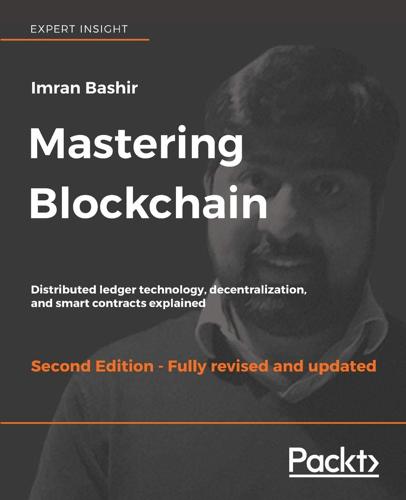
Mastering Blockchain, Second Edition
by
Imran Bashir
Published 28 Mar 2018
For example, if ten bitcoins were destroyed then altcoins can have a value no greater than some bitcoins destroyed. This means that bitcoins are being converted into altcoins by burning them. Proof of ownership: Instead of permanently destroying bitcoins, an alternative method is to prove that users own a certain number of bitcoins. This proof of ownership can be used to claim altcoins by tethering altcoin blocks to Bitcoin blocks. For example, this can be achieved by merged mining in which effectively bitcoin miners can mine altcoin blocks while mining for bitcoin without any extra work. Merged mining is explained later in the chapter.
…
Methods of providing an initial number of altcoins are discussed as follows: Create a new blockchain: Altcoins can create a new blockchain and allocate coins to initial miners, but this approach is now unpopular due to many scam schemes or pump and dump schemes where initial miners made a profit with the launch of a new currency and then disappeared. Proof of Burn (PoB): Another approach to allocating initial funds to a new altcoin is PoB, also called a one-way peg or price ceiling. In this method users permanently destroy a certain quantity of bitcoins in proportion to the quantity of altcoins to be claimed. For example, if ten bitcoins were destroyed then altcoins can have a value no greater than some bitcoins destroyed.
…
If the primary goal is to build a decentralized blockchain platform, they are called alternative chains; if the sole purpose of the alternative project is to introduce a new virtual currency, it is called an altcoin. Alternative blockchains will be discussed in detail in Chapter 16, Alternative Blockchains. This chapter is mainly dedicated to altcoins whose primary purpose is to introduce a new virtual currency (coin) although some material will also be presented on the topic of alternative protocols built on top of bitcoin to provide various services. These include concepts such as Namecoin, where the primary purpose is to provide decentralized naming and identity services instead of currency. Currently, as of late 2018, there are hundreds of altcoins on the market, and they hold some monetary value such as Namecoin, Zcash, Primecoin, and many others.
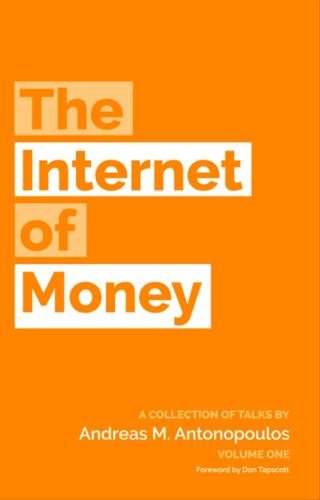
The Internet of Money
by
Andreas M. Antonopoulos
Published 28 Aug 2016
We’re not going to have hundreds of altcoins. We’re not going to have thousands of altcoins. We’re going to have hundreds of thousands, and then millions of altcoins. Then, there will be thousands of altcoins being created every day to organize local communities to express fads, to create popularity contests, to codify the latest internet meme. "We’re not going to have hundreds of altcoins. We’re not going to have thousands of altcoins. We’re going to have hundreds of thousands, and then millions of alt-coins." 7.3. Authority by Production With so many altcoins, how do you tell which ones have value and which ones don’t?
…
"Now, we live in a new world, a world in which currency is a choice, and not just a choice in terms of use… It’s also a means of expression." As I thought about the evolution of alt-currencies, as they’re called, I realized I was asking the wrong questions. How many currencies will there be? How many altcoins will there be? How will altcoins compete in a world of cryptocurrencies as we move into the future? Will there be hundreds of altcoins? If there are hundreds of altcoins, what does that mean for the value of each of the altcoins? How do they compete? That was the wrong way of thinking about it. I saw currency as a zero-sum game, just like it had been imposed on my worldview from the nation-states that created currency.
…
I don’t know if you noticed, but Ethereum had a pretty big presence here. An interesting question comes up, actually quite a few people have asked me: "Does Ethereum threaten the future of bitcoin? Does it steal some of its thunder?" Those are questions I’ve heard several times, and I’ve heard people refer to that issue in trying to understand altcoins - wondering whether altcoins essentially threaten the dominance of bitcoin, if they make bitcoin weaker, if they distribute the value of the network too broadly. 7.1. Born into Currency I’ve been thinking about this question for quite a while. I think, fundamentally, it’s a question that evokes the old paradigm of currencies.
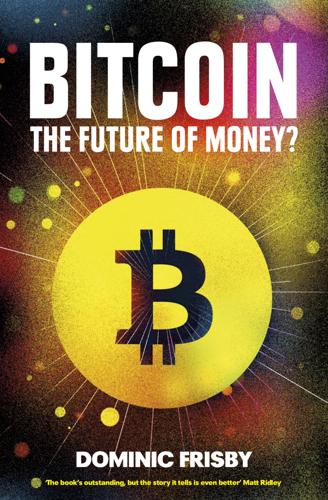
Bitcoin: The Future of Money?
by
Dominic Frisby
Published 1 Nov 2014
Instead, coders began to develop alternative cryptocurrencies, aping some aspects of Bitcoin but changing others. These were known as altcoins. There are now 300 or more kinds of altcoin. Many of them are scams and get-rich-quick schemes. Many of them are simply experiments. Most of them will amount – or already have amounted – to nothing. But some of them are quite legitimate. At present, they comprise just a few per cent of the entire cryptocurrency market cap. At $500 a coin, the market cap of Bitcoin stands at around $6.5 billion. All the other altcoins combined amount to about $350,000. Bitcoin has attracted all the publicity. Bitcoin has all the infrastructure and investment.
…
‘Well, I think that what is more interesting is to find a good altcoin – to find a real network that’s growing that’s not Bitcoin. I think Bitcoin itself is a very interesting investment. You should probably have some money there. But on the side if you want to make the real money, the catch-up trade – some altcoins. I think your first trade should just be $50 to try and learn how the system works. Don’t do anything until you’re absolutely comfortable with how the system works. Then I suggest you go and put 90% of your crypto book into bitcoins and 10% into altcoins. To find the good ones, don’t believe the stories and avoid hype.
…
But with the failure of companies such as MtGox, you can bet there are many stories that are as disheartening as the above are amusing. The world of crypto-currencies (there are now over 300 altcoins) has attracted all sorts of crooks and fraudsters, as well as those who religiously think they are changing the world. There are scams and get-rich-quick schemes galore. It has become a free-for-all, like the gold rushes of the Wild West. Over time, things should settle. But one of the things you quickly notice is the sense of humour to it all. Many altcoins are based around a joke – ‘Coinye West’, for example. (When my father read this he asked, ‘What’s the joke?’) Many are simply in it for the laugh.

Blockchain: Blueprint for a New Economy
by
Melanie Swan
Published 22 Jan 2014
Computer virus detection software arose in response to computer viruses; and so far some features of the same constitutive technologies of Bitcoin (like Tor, a free and open software network) have been deployed back into detecting malicious players. Another significant barrier to Bitcoin adoption is the ongoing theft, scandals, and scams (like so-called new altcoin “pump and dump” scams that try to bid up new altcoins to quickly profit) in the industry. The collapse of the largest Bitcoin exchange at the time, Tokyo-based MtGox, in March 2014 came to wide public attention. An explanation is still needed for the confusing irony that somehow in the blockchain, the world’s most public transparent ledger, coins can disappear and still remain lost months later.
…
Crypto Money Expo, December 5, 2014. http://cryptomoneyexpo.com/expos/inv2/#schedule and http://youtu.be/qdGoRep5iT0/. Index A address, How a Cryptocurrency Works Airbnb, Government Regulation Alexandria, Freedom of Speech/Anti-Censorship Applications: Alexandria and Ostel altcoin, Summary: Blockchain 1.0 in Practical Use altcoin wallet, How a Cryptocurrency Works alternative currencies, Summary: Blockchain 1.0 in Practical Use-Relation to Fiat Currency, Cryptocurrency Basics-Ledra Capital Mega Master Blockchain List anti-censorship, Freedom of Speech/Anti-Censorship Applications: Alexandria and Ostel APIs, Blockchain Development Platforms and APIs Aráoz, Manuel, Proof of Existence archiving, Blockchain Ecosystem: Decentralized Storage, Communication, and Computation art (see digital art) artificial intelligence (AI), The Blockchain as a Path to Artificial Intelligence, Blockchain AI: Consensus as the Mechanism to Foster “Friendly” AI-Smart Contract Advocates on Behalf of Digital Intelligence artworks, Smart Property (see also digital art) Ascribe, Monegraph: Online Graphics Protection autocitation, Blockchain Academic Publishing: Journalcoin automated digital asset protection, Digital Asset Proof as an Automated Feature automatic markets, Automatic Markets and Tradenets autonomy, Smart Contracts B bandwidth, Technical Challenges banking industry (see financial services) betting, Bitcoin Prediction Markets, Smart Contracts big data, Blockchain Layer Could Facilitate Big Data’s Predictive Task Automation .bit domains, Namecoin: Decentralized Domain Name System "Bitbank", Financial Services Bitcoin colored coins, Smart Property concept, Preface digital divide of, Digital Divide of Bitcoin M2M/IoT payment network, M2M/IoT Bitcoin Payment Network to Enable the Machine Economy MOOCs, Blockchain Learning: Bitcoin MOOCs and Smart Contract Literacy neutrality, Blockchain Neutrality origins and applications overview, What Is Bitcoin?
…
The concept and operational details are described in a concise and readable white paper, “Bitcoin: A Peer-to-Peer Electronic Cash System.”7 Payments using the decentralized virtual currency are recorded in a public ledger that is stored on many—potentially all—Bitcoin users’ computers, and continuously viewable on the Internet. Bitcoin is the first and largest decentralized cryptocurrency. There are hundreds of other “altcoin” (alternative coin) cryptocurrencies, like Litecoin and Dogecoin, but Bitcoin comprises 90 percent of the market capitalization of all cryptocurrencies and is the de facto standard. Bitcoin is pseudonymous (not anonymous) in the sense that public key addresses (27–32 alphanumeric character strings; similar in function to an email address) are used to send and receive Bitcoins and record transactions, as opposed to personally identifying information.
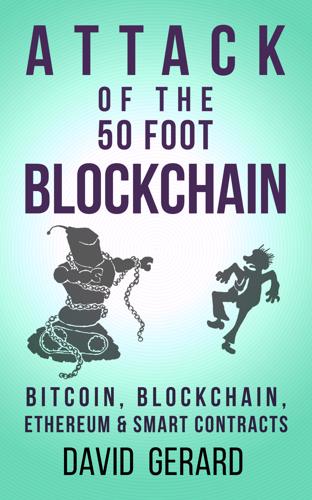
Attack of the 50 Foot Blockchain: Bitcoin, Blockchain, Ethereum & Smart Contracts
by
David Gerard
Published 23 Jul 2017
For you to be contacted, you would have to post here or in PM to say you might lend me bitcoins, and approx. how many you’d be willing to lend me.283 Nicolle has not been seen online since the 120,000 BTC hack.284 Bitfinex does answer one common question asked of Bitcoin sceptics: “If you’re so critical of Bitcoin, why don’t you short it?” “Well …” Chapter 9: Altcoins Bitcoin was an open protocol implemented in open source code. So alternate cryptocurrencies, or altcoins, quickly sprang up – mostly slightly-tweaked versions of the Bitcoin code, many generated automatically at the now-defunct service coingen.io. Other blockchains might have different hashes, block sizes, block times or consensus models (how to choose who adds the next block).
…
Reddit /r/ethereum, 26 April 2016. [351] “Post-Mortem Investigation (Feb 2016)”. King of the Ether. (archive) [352] “Hi! My name is Rubixi. I’m a new Ethereum Doubler. Now my new home – Rubixi.tk”. Bitcointalk.org Bitcoin Forum > Alternate cryptocurrencies > Marketplace (Altcoins) > Service Announcements (Altcoins), 11 April 2016. (archive) [353] Vitalik Buterin. “Live example of ‘underhanded solidity’ coding on mainnet”. Reddit /r/ethereum, 10 April 2016. [354] brockchainbrockshize. Comment on “Attacker has withdrawn all ETC from DarkDAO on the unforked chain”. Reddit /r/ethereum, 25 July 2016
…
Chapter 7: Spending bitcoins in 2017 Bitcoin is full: the transaction clog Bitcoin for drugs: welcome to the darknet Ransomware Non-illegal goods and services Case study: Individual Pubs Chapter 8: Trading bitcoins in 2017: the second crypto bubble How to get bitcoins From the first bubble to the second Bitfinex: the hack, the bank block and the second bubble Chapter 9: Altcoins Litecoin Dogecoin Ethereum Buterin’s quantum quest ICOs: magic beans and bubble machines Chapter 10: Smart contracts, stupid humans Dr. Strangelove, but on the blockchain So who wants smart contracts, anyway? Legal code is not computer code The oracle problem: garbage in, garbage out Immutability: make your mistakes unfixable Immutability: the enemy of good software engineering Ethereum smart contracts in practice The DAO: the steadfast iron will of unstoppable code Chapter 11: Business bafflegab, but on the Blockchain What can Blockchain do for me?

The Age of Cryptocurrency: How Bitcoin and Digital Money Are Challenging the Global Economic Order
by
Paul Vigna
and
Michael J. Casey
Published 27 Jan 2015
One was that by 2011, bitcoin was inspiring imitators—some outright copies, others clear attempts to remove what were seen as some of bitcoin’s flaws. Altcoins, as they came to be known, would use the same or similar aspects of bitcoin’s system, all made possible because of bitcoin’s open-source protocol and its lack of an owner. Anybody can download the software, copy it, and build something new from it. Lawsuits for copyright or patent infringement are simply not a concern. As of this writing, several hundred of these digital coins exist, most too small to be worth mentioning, but a few with sizable followings. They all fall well short of bitcoin in ranks. Litecoin, the oldest and largest of the altcoins, had a market cap of about $150 million at the time of writing.
…
But others are openly hostile to what they see as interlopers, fearing that the nascent movements gathering around them could detract from the broader mission of change. At the same time, the community development around some of these altcoins is instructive to the broader question of how communities develop around cryptocurrencies. Bitcoiners can learn from how passions have been stirred by some of them. Case in point: dogecoin, an altcoin that started out as a joke by Billy Markus and Jackson Palmer in December 2013 that quickly took on a life of its own. The “doge” was appropriated from an Internet meme that started with a 2005 puppet show on YouTube, in which one of the puppets misspells dog as doge, and the other mispronounces it as “dohj.”
…
When GoCoin decided that it would start offering payment-processing services in dogecoin as well as bitcoin and litecoin, Chairman Brock Pierce explained that it was driven by the power of its community. “Community is everything for a currency,” he said. The question is whether the emergence of altcoin communities such as this one undercuts the wider bitcoin community or benefits it. Some wonder whether these imitators will simply take market share away from bitcoin—though with bitcoin’s market capitalization more than ten times that of the combined ninety-nine next biggest altcoins, no such threat had arisen as of September 2014. Others think that by expanding both the range of technological innovation and the branding and cultural production associated with cryptocurrency, these alternative communities are helping a wider cryptocurrency community to fulfill a grander, shared purpose
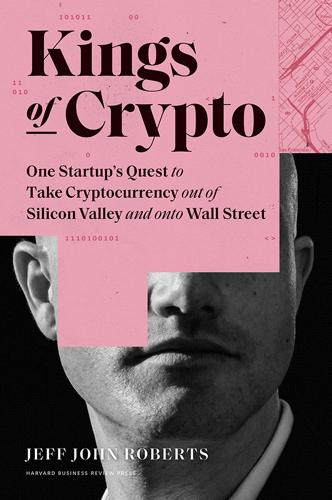
Kings of Crypto: One Startup's Quest to Take Cryptocurrency Out of Silicon Valley and Onto Wall Street
by
Jeff John Roberts
Published 15 Dec 2020
In 2017, the media offered numerous accounts of ordinary individuals who had ridden the crypto wave to windfalls. Now, the stories took a sadder turn. The New York Times told of the hard lessons learned by an Englishman who had thrown his savings of $23,000 into altcoins and now held only $4,000. On Reddit, the stories were darker. One user told a discussion board how his wife had left him after he dumped all of their money into Tron, a once-hyped altcoin that hit a high of 23 cents but now trades for a penny. Other Reddit readers consoled each other with assurances that the market would bounce back or, in some cases, shared the numbers of suicide prevention hotlines.
…
And in a market where crypto coins of all stripes kept soaring higher and higher, why not take a flyer on a brand-new ICO before the rest of the market bid up the price? Each day, it seemed, another obscure coin enjoyed a 100 percent pop, which in turn inspired yet another ICO. The crypto media called this flood of new currencies “altcoins”—as in, alternatives to bitcoin. Longtime bitcoin believers had their own name for the tokens: “shitcoins.” Shitcoin critics claimed the new tokens were spun up on shaky technology and then flogged in fly-by-night marketing schemes. It was during this craze, at an exclusive investor conference in New York, that JPMorgan Chase CEO Jamie Dimon, likely horrified by the rampant speculation, tore into cryptocurrency, including bitcoin.
…
The problem became so pervasive that Vitalik changed his Twitter name to “Vitalik Not Giving Away Ethereum Buterin.” On Telegram, the messaging app hugely popular with the crypto community, crooks organized conspiracies to manipulate the market. One Telegram group known as “the Big Pump” would pick a little-known altcoin and agree to buy it en masse. The influx of buyer interest, they hoped, would cause a stir in the market and lead naive outsiders to run in and buy the coin too, causing its value to soar. The Telegram insiders would then sell off their positions, completing the crypto version of a classic investment scam, the pump and dump.
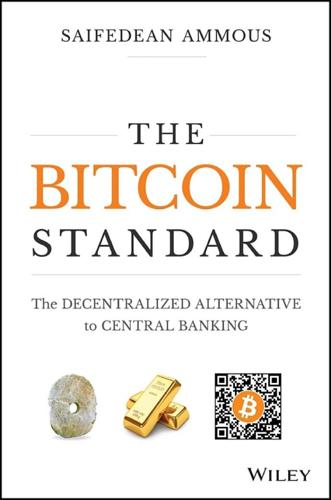
The Bitcoin Standard: The Decentralized Alternative to Central Banking
by
Saifedean Ammous
Published 23 Mar 2018
Being the first such invention, Bitcoin demonstrating its value as digital cash and hard money was enough to secure growing demand for it, allowing it to succeed when the only person behind it was an anonymous programmer who practically spent no money on promoting it. Being fundamentally knock‐offs that are very easy to recreate, all altcoins do not have this luxury of real‐world demand, and must actively build and increase this demand. This is why virtually all altcoins have a team in charge; they began the project, marketed it, designed the marketing material, and plugged press releases into the press as if they were news items, while also having the advantage of mining a large number of coins early before anybody had heard of the coins.
…
It would be relatively easy for central banks to get any of the teams behind this currency to destroy it, or alter its operation in a way that prevents it from competing with national currencies. No single altcoin has demonstrated anything near Bitcoin's impressive resilience to change, which is down to its truly decentralized nature and the strong incentives for everyone to abide by the status quo consensus rules. Bitcoin can only make this claim after growing in the wilds of the internet for nine years without any authority controlling it, and very ably repelling some highly coordinated and well‐funded campaigns to alter it. In comparison, altcoins have the unmistakable friendly culture of nice people working together on a team project.
…
Should the teams behind any particular altcoin decide to change its monetary policy, it would be a relatively straightforward thing to achieve. Ethereum, for instance, does not yet have a clear vision of what it wants its monetary policy to be in the future, leaving the matter up to community discussion. While this may work wonders for the community spirit of Ethereum, it is no way to build a global hard money, which, to be fair, Ethereum does not claim to do. Whether it is because they are aware of this point, or to avoid run‐ins with political authority, or as a marketing gimmick, most altcoins do not market themselves as competitors to Bitcoin, but as performing tasks different to Bitcoin.
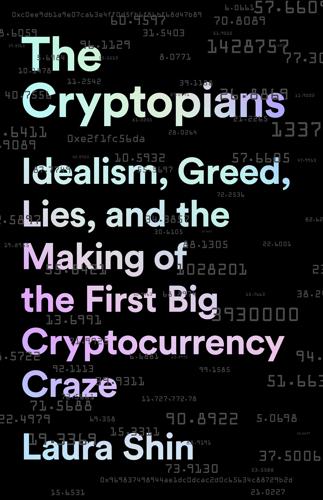
The Cryptopians: Idealism, Greed, Lies, and the Making of the First Big Cryptocurrency Craze
by
Laura Shin
Published 22 Feb 2022
His claim to fame before cryptocurrency was founding a sheet music publishing house known for its spiral-bound scores, solving the problem of books of piano sonatas or opera scores that wouldn’t stay open or whose pages would fall out due to creased-to-death bindings.56 “Polo,” as many in the industry called it, had been one of the first three exchanges to list Ethereum when the network launched.57 In general, Polo was known not just for listing many alt-coins but for doing so quickly—a feat given that each blockchain worked differently and buys and sells needed to be secure. Tristan did all the integrations, not only writing all the code for the site but also keeping all the quirks of the codebase in his head. He was especially intrigued by challenging coins. Partially because it was the center of the alt-coin world, but also possibly because it had, in spring 2015, launched margin trading for alt-coins, Polo became the go-to place to buy ether the moment Ethereum launched.58 In the winter/spring of 2016, when the ETH price was coming out of its doldrums, giving the foundation more breathing room, Polo, which had previously languished in the teens on a ranking of the highest-volume exchanges, reached the top—hitting number one across all exchanges in the world on the cryptocurrency data site CoinMarketCap.59 As the dominant exchange for trading ETH, it had a number of traders, particularly ETH whales, who now had ETHC, the coins on the old chain that became defunct when it had appeared to stall.60 Whales are an exchange’s most prized customers.
…
For instance, BitShares, the other project that Charles had left on bad terms, had released a video of founder Daniel Larimer interrogating Vitalik after his talk at BTC Miami, criticizing Vitalik for not answering his questions, and saying Ethereum was unsustainable and centralizing.7 Meanwhile, many Bitcoiners claimed “alt-coins” like Ethereum were unnecessary. For instance, a March blog post titled “The Coming Demise of the Altcoins (and What You Can Do to Hasten It)” said, “When people say, ‘But Ethereum can do smart contracts!’ this is actually false… Ethereum will therefore soon be forgotten like the rest once it inevitably fails to deliver on its promise.”8 Or, on BitcoinTalk, within two days of the crowdsale start, under the title “[ETH] Ethereum = Scam,” Spoetnik posted, “it’s an IPO and IPO’s in crypto are ALL scams.”9 TaunSew wrote, “Ether could be laundered Bitcoin or it’s them buying their own volume to make it look like there’s actual demand.”
…
He traveled to South America, spent a lot of time in Ecuador, and then went to Thailand, where he bought Bitcoin for the first time. From the start, because of his fascination with money, Griff liked alt-coins. They embodied his philosophy that the story of money could be rewritten to have other meanings. He was fascinated by how Namecoin was a coin for censorship-resistant domain registration, and Primecoin was a system for discovering prime numbers. He began buying alt-coins like Litecoin, Namecoin, Peercoin, Feathercoin, Terracoin, and so forth, but lived off his savings from the appreciation of gold, his chemical engineering earnings, and his unemployment checks.

Bit by Bit: How P2P Is Freeing the World
by
Jeffrey Tucker
Published 7 Jan 2015
Answer: As in any sector, there are scams, among which is “pump and dump,” meaning that developers release a coin, fuel the hype, and then sell it. Which ones are real and which ones are not is impossible to say. There are serious risks to such altcoins and it will be some time before the altcoin market becomes stable and reasonably disciplined by market forces. This is part of what happens in any startup technology. Question: Can you tell me about one or two popular altcoins? How are they different? Will they replace bitcoin? Answer: Litecoin is the second most popular cryptocurrency. It is based on a different algorithm from bitcoin, and it has an infinite inflation rate.
…
Answer: The blockchain is growing in size, and, yes, that is a problem. But developers are always at work on fixes to improve the efficiency and scalability of the ledger, which will grow until the end of time. This is beauty of open-source software. Every problem cries out for a fix, and the fix is then forthcoming. Question: What is an altcoin? Answer: Altcoin stands for alternative to bitcoin, which is mostly based on the bitcoin protocol. There are tens of thousands or more in circulation. Some are serious, many are scams, and most fall somewhere in between. They do provide an excellent testing ground for future developments in cryptocurrency.
…
Security for your property is at a premium until the market shakes itself out. Question: What is Dogecoin? Tell me about it. Answer: It’s very cool, or maybe it is a silly fad. The market has to decide. Dogecoin is one of many currencies built on a Litecoin protocol, which in turn was built on bitcoin. There are tens of thousands of so-called altcoins in circulation today. This is market competition at work. They all live in their own ecosphere. May the best coin win! Question: How does the U.S. government classify BTC? Answer: The Treasury Department says bitcoin is property subject to taxation. FinCEN, a bureau of the U.S. Department of Treasury whose mission it is to safeguard the U.S. financial system, says it is a foreign currency subject to regulation.

Cryptoassets: The Innovative Investor's Guide to Bitcoin and Beyond: The Innovative Investor's Guide to Bitcoin and Beyond
by
Chris Burniske
and
Jack Tatar
Published 19 Oct 2017
Those with the foresight to have bought Google during its “Initial Public Offering” (IPO) would have seen a 1,800 percent appreciation by August 2016, and those who bought Amazon’s IPO would have seen a 1,827 percent appreciation.10 Blockchain architectures and their native assets are well on their way to becoming the next great meta-application to leverage Internet infrastructure. They already provide services that include global currencies, world computers, and decentralized social networks, among hundreds of others. The native assets historically have been called cryptocurrencies or altcoins, but we prefer the term cryptoassets, which is the term we will use throughout the book. The terms cryptocurrencies and altcoins convey only a fraction of the innovation that is occurring in the cryptoasset economy. Not all of the 800 existing cryptoassets are currencies. We are not just witnessing the decentralized creation of currencies but also of commodities and polished digital goods and services, as blockchains meld technology and the markets to build Web 3.0.
…
As of January 1, 2017, already 76.6 percent of bitcoin’s supply had been brought into existence,13 and by the time the next block reward halving happens in 2020, 87.5 percent of the bitcoin ever to be minted will be in existence. A few years after 2100, we will reach a supply of 20,999,999 bitcoin, which is effectively 21 million. It is bitcoin’s scarce supply schedule that makes many think of it as digital gold.14 THE BIRTH OF ALTCOINS Within a couple years of launching, it had become clear that bitcoin was the first fully decentralized cryptocurrency to gain significant adoption, but there were some aspects with which people were not fully satisfied. For example, bitcoin’s 10-minute block time meant that, depending on when a consumer hit send, it could take up to 10 minutes, sometimes more, for the transaction to be appended to Bitcoin’s blockchain.
…
The new software operated similarly to Bitcoin, but required its own set of developers to maintain it, miners to provide the hardware, and a separate blockchain to keep track of the debits and credits of the new native asset. Through this combination of open-source software and ingenious programmers, many other cryptocurrencies have been brought into existence. Those that are only slight modifications of Bitcoin are often referred to as altcoins. BITCOIN’S FIRST DIGITAL SIBLING Namecoin15 was the first significant fork away from Bitcoin. Interestingly, it was less about creating a new currency and more about utilizing the immutable nature of the blockchain, a use case we’ll address more in the next chapter. A website created with Namecoin comes with the .bit domain (as opposed to the .com domain) and provides security and censorship resistance to those sites registered with it.16 Namecoin grew out of an idea on the Bitcointalk forum in 2010 that focused on BitDNS (DNS stands for domain naming service, which handles all web addresses).17 In 2013, a service called NameID was released that uses the Namecoin blockchain to enable the creation of and access to websites that have a Namecoin identity.
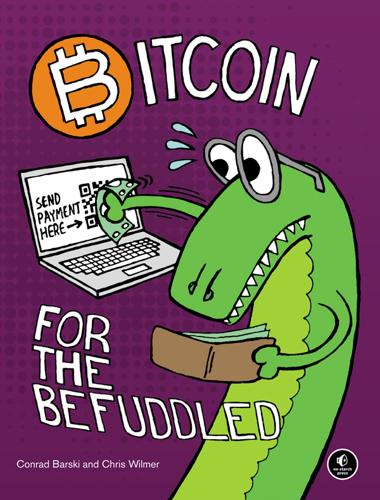
Bitcoin for the Befuddled
by
Conrad Barski
Published 13 Nov 2014
Some exchanges facilitate only USD to BTC operations, whereas others offer multiple currency pairs. You might notice that some Bitcoin currency exchanges offer currency pairs you have not heard of—for example, LTC, FTC, TRC, PPC, XPM, and so on. These other digital currencies—called alternative coins or altcoins—were created after, and largely inspired by, Bitcoin. To learn more about such digital currencies, check out “The Strange World of Altcoins” on page 181. Many exchanges also have different BTC/USD exchange rates! This means you can sell bitcoins at a higher price on one exchange and buy them for a lower price on the other exchange. So this is free money, right? Well, yes and no.
…
Chapter 2: Bitcoin Basics Chapter 3: Storing Your Bitcoins Safely, Securely, and Conveniently Chapter 4: Buying Bitcoins Chapter 5: Lost at Sea: A Cryptographic Adventure Chapter 6: Why Bitcoin Is a Big Deal Chapter 7: The Cryptography Behind Bitcoin Chapter 8: Bitcoin Mining Chapter 8.5: The Strange World of Altcoins Chapter 9: Understanding the Different Types of Bitcoin Wallets Chapter 10: Bitcoin 2030 Appendix A: Hello Money! A Simple JavaScript Program Appendix B: Bitcoin Programming with BitcoinJ Index CONTENTS IN DETAIL PREFACE Acknowledgments Chapter 1: WHAT IS BITCOIN? Why Bitcoin Now?
…
A Parable of Two Generals Applying the Parable to Bitcoin Preventing Attacks with Mining Distributing New Currency with Mining How Does Bitcoin Mining Work? How Miners Solve a Block Anatomy of a Block Pooled Mining Bitcoin Mining for Profit Theoretical Hash Rate Limits Decentralization in Bitcoin Mining 8.5 THE STRANGE WORLD OF ALTCOINS Chapter 9: UNDERSTANDING THE DIFFERENT TYPES OF BITCOIN WALLETS Wallet Software Design Fundamentals Offline vs. Online Transaction Signing Random Key Generation vs. Deterministic Key Generation (vs. Single Key Generation) Full vs. Simplified Payment Verification Other Common (and Not So Common) Bitcoin Wallet Features Future Wallets Which Wallet Is Right for You?
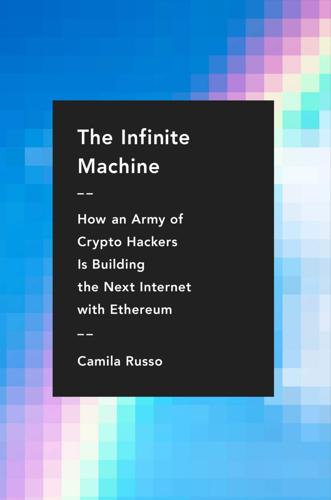
The Infinite Machine: How an Army of Crypto-Hackers Is Building the Next Internet With Ethereum
by
Camila Russo
Published 13 Jul 2020
From 2008, when Satoshi Nakamoto created the first decentralized digital currency, to 2011, Bitcoin ruled alone. But by December 2013, dozens of new coins, also known as alt-coins, had been created, and the speculation around them helped fuel the rally that year. When the early Ethereum team gathered in Miami, the first alt-coin bubble in cryptocurrencies’ short history had just reached its high point. As they schemed and dreamed of greatness, they were also planting the seeds for what would become a much bigger alt-coin boom. But that would be a few years later. That week the only thing people in the house cared about was that they were witnessing the birth of the next Bitcoin as in, the next big thing in cryptocurrencies.
…
Back on the road, he continued studying to get an online master’s degree in digital currencies from the University of Nicosia, said to be the first university to offer such a thing, and decided to code up an Ethereum smart contract for a homework assignment. He had recently stumbled into the Ethereum Reddit page and posted the contract and a blog post explaining it, to get feedback. Griff seldom participated in the Bitcoin and altcoin forums because he felt they were too negative and critical, so he was amazed when nobody ridiculed his amateurish code. Ethereum developer Alex Van de Sande even took the time to edit it. “This is home,” Griff thought. He immediately looked for work in the Ethereum community and asked to join Slock.it, what he thought was one of the most exciting crypto projects out there.
…
“We believe in a strong separation of concerns, where system forks are only possible in order to correct actual platform bugs, not to bail out failed contracts and special interests.”7 Others supporting the survival of the old chain were Bitcoiners who wanted to make a point: Ethereum is a silly little alt-coin with sycophantic followers bowing to their supreme leader, Vitalik Buterin. As he tried to make sense of what was happening, Vitalik got a message from Gregory Maxwell, a prominent Bitcoin developer. He wanted to buy Vitalik’s coins on the old chain. With his offer, he was signaling his support for Ethereum Classic.

Blockchain Revolution: How the Technology Behind Bitcoin Is Changing Money, Business, and the World
by
Don Tapscott
and
Alex Tapscott
Published 9 May 2016
Ten minutes is also too long for financial transactions where timing matters to get an asset at a particular price, and where latency exposes traders to time-based arbitrage weaknesses such as market timing attacks.6 The immediate solution for entrepreneurs has been to fork the bitcoin code base, that is, to modify the source code by tweaking a few parameters, and to launch a new blockchain with an altcoin in place of bitcoin as incentive to participate. Litecoin is a popular altcoin with a block time of 2.5 minutes, and Ripple and Ethereum are entirely reengineered blockchain platforms that have latency of seconds, not minutes. A sixth dimension is behavioral change in a deeper sense than Netiquette. Today, many people count on their bank or credit card company, even talking with a real person, when they make an accounting error, forget their passwords, or lose their wallets or checkbooks.
…
Irrevocability of a transaction and instant reconciliation of financial reporting would eliminate one aspect of agency risk—the risk that unscrupulous managers will exploit the cumbersome paper trail and significant time delay to conceal wrongdoing. Value Innovation: The bitcoin blockchain was designed for moving bitcoins, not for handling other financial assets. However, the technology is open source, inviting experimentation. Some innovators are developing separate blockchains, known as altcoins, built for something other than bitcoin payments. Others are looking to leverage the bitcoin blockchain’s size and liquidity to create “spin-off” coins on so-called sidechains that can be “colored” to represent any asset or liability, physical or digital—a corporate stock or bond, a barrel of oil, a bar of gold, a car, a car payment, a receivable or a payable, or of course a currency.
…
In a 137-hour session, it mined 152.8 microbitcoin (μBTC), roughly three and a half U.S. cents at the time. But at ten cents per kilowatt-hour, Bob’s computer used about fourteen cents of electricity. Bob concluded, “The days of mining bitcoins from your PC are now over.” So any design change to the original bitcoin protocol, whether through an altcoin or an upgrade, must keep in mind appropriate economic incentives to sustain miner decentralization, so that the network gets good value from miners in exchange for the large sums of bitcoin. Bitcoin core developer Peter Todd likened this task to designing a robot that can buy milk at the grocery store.

The Truth Machine: The Blockchain and the Future of Everything
by
Paul Vigna
and
Michael J. Casey
Published 27 Feb 2018
It’s forcing the incumbents within them to see the spotlight that this new technology shines on the inefficiencies of their old, centralized work processes. And some of the ideas being developed there will no doubt be of great value to the wider ecosystem of blockchain development. But we believe the “permissionless” ideal first laid down by Bitcoin and since followed by countless alternative “altcoins” and blockchains is a vital one for the world to focus on. As we stated in The Age of Cryptocurrency, Bitcoin was merely the first crack at using a distributed computing and decentralized ledger-keeping system to resolve the age-old problem of trust and achieve this open, low-cost architecture for intermediary-free global transactions.
…
Still, Tezos’s contribution to the development of more robust governance systems has been an important one. Every new idea will have shortcomings, yet, if developed by serious engineering teams, each idea can move the ball forward toward decentralization, functional governance, scalability, and privacy. This has been so with altcoins such as Litecoin, whose alternative approach to the proof-of-work algorithm showed that it was possible to stall the entrance of high-powered, industrial players into the mining network. Others—notably Vertcoin, discussed in chapter four—have improved on Litecoin’s model. Vertcoin has avoided Bitcoin’s unwelcome experience, in which the unrestrained competition for block rewards fostered a concentration of computation-heavy, electricity hungry mining operations.
…
That’s because those who gain the most tokens are those with the most powerful computers. Yet not every mining-based cryptocurrency needs to end up as Bitcoin has, where only the biggest, most powerful computing operations—now managed on an industrial scale—can effectively compete for coins. Some new altcoins are designed to be “ASIC-resistant.” This means that the protocol’s in-built consensus algorithm—the puzzle miners must solve to win coins—compels their computers to carry out various functions that can’t easily be performed by existing versions of the super-fast Application-Specific Integrated Chips now uniformly embedded into the equipment of the biggest bitcoin miners.

Cloudmoney: Cash, Cards, Crypto, and the War for Our Wallets
by
Brett Scott
Published 4 Jul 2022
The imagery of rugged heroic individualism alongside trading is enticing to men who might otherwise be working a standard day job. Launching digital collectibles that tap into this can be very lucrative, which means the factionalism is now as much commercial as it is political. Since Bitcoin, hundreds of ‘alt-coins’ have emerged, Bitcoin-like clones with new branding. These tokens – such as Litecoin, Peercoin or Dogecoin – maintain the same basic collectibles structure by issuing a limited edition set of numbered tokens, but tinker with their logo, quantity, mechanism or privacy. Cyberspace is now littered with countless crypto-tokens sold in exchange for US dollars.
…
Aadhar system, 44, 97, 169 abacuses, 159 ‘Abracadabra’, 50 accelerators, 17 active choice, 125 Acxiom, 109 Adventures of a Banknote, The (Bridges), 65 Aesop, 45–6 AirBnB, 150 Alameda, California, 102 alcohol, 102, 118, 170 Alexa, 147, 150 Alibaba, 2, 7, 114, 150, 178 Alipay, 114 Alphabet, see Google alt-coins, 13, 217–18 Althusser, Louis, 86 Amazon, 1, 2, 7, 133, 147, 149, 150, 174, 177, 249–50 Alexa, 147, 150 anti-cash lobbying, 41–2, 254 CBDCs and, 243, 244 Coin, 236 Pay, 150 Amazon region, 130, 176, 247, 249 American Revolutionary War (1775–83), 60 Ames Research Center, 153 Amnesty International, 222 Amsterdam, Netherlands, 128–9 Amy, 147 anarchism, 7, 14, 106, 183, 191, 193, 215 anarcho-capitalism, 14, 184 Andes, 96, 129 anthropology, 124 anti-feminism, 226 anti-Semitism, 225, 262 anti-statism, 42, 184, 215–16 antidotes, 52–4 Apollo 11 mission (1969), 153 Apple, 7, 125 apps and, 141 Card, 150 data, 108 Pay, 78, 125, 130 Super Bowl advert (1984), 8 apps, 1, 2, 7, 17, 27, 40, 125, 139–51, 232 data collection, 165–6 interfaces, 139–51 ArcelorMittal, 24 Aria, 169 Armer, Paul, 105–6 Art of Not Being Governed, The (Scott), 228 artificial intelligence (AI), 8, 11, 17, 108, 114, 147, 153–72, 175, 252 biases, 167 credit-scoring, 17, 160, 162–3, 167, 168, 170 data analysis, 108, 153–72 interfaces, 146–8 Asimov, Isaac, 161, 170 Assange, Julian, 183 Assemblage, New York City, 226 Astana, Kazakhstan, 227–9 Athens, Greece, 131 ATMs (automatic teller machines), 32, 34, 35, 36, 39, 48, 61, 62, 248 CIT industry, 62 closure of, 32, 39, 48, 83, 84, 85, 132 crises and, 36, 244 note denominations, 62 profitability, 39 Atwood, Margaret, 117 austerity, 193 Australia, 118 Austria, 7, 109 authoritarianism, 111, 118, 168 automatic payments, 149 automation, 9, 10, 33, 41–2, 99, 123, 126, 133, 137, 142–3, 232 apps, 139–51, 232 artificial intelligence, 153–72 automation of, 153–4 surveillance, 112, 114, 153–72 aviaries, 171 Azure cloud, 233 Back to the Future (1985 film), 198 Baidu, 7, 178 Bangladesh, 32 Bank for International Settlements, 79 Bank Identification Codes (BIC), 76 Bank of America, 38, 75, 147 Bank of England, 40, 242, 243 banking sector, 38–9, 65–82 accounts, 31, 35, 46, 66, 132, 205–6 artificial intelligence, 153–72 ATMs, see ATMs bailouts, 113 centralisation of power, 15, 180–83 closures of ATMs/branches, 32, 39, 48, 83, 84, 85, 132 cloudmoney, 64, 66–82 data, 108–9, 156–7 deposits, 66–7, 69 electronic trading platforms, 158 exiting, 39, 48, 61, 63, 68, 83 federated frontline, 136–8, 147 high-street banks, 39–40, 158 interbank markets, 138, 231 interfaces, 138–51 international transfers, 74–6, 108, 179 Internet banking, 76–7, 139 investment banks, 6, 17, 22–3, 26, 113, 157–8 loans, 70–71, 107, 159 money creation, 59–63, 67–72, 202 operating system, 141–2 secondary system, 50, 63–4 sub-currencies, 72–3 transfers, 72–8 banknotes, 59–63 cash-in-transit companies, 62 counterfeiting of, 60–61 denominations, 62 polymer, 65 Bannon, Steve, 225, 234 Barclays, 38, 72–3, 116 base money, 69 beggars, 115 Better Than Cash Alliance, 34–5, 37, 45, 93, 96, 131 biases, 167 bicycles, 89, 90 Big Bouncers, 114, 170 Big Brother, 113–15 Big Butlers, 114, 170–71 Bill & Melinda Gates Foundation, 44–5 biometrics, 44, 150, 169 biotechnology, 10, 11 Bitcoin, 13–15, 16, 184–5, 187–210, 211–18 blockchain technology, 13–15, 185, 189–90, 195, 197–202 Cash fork (2017), 214, 217 climate change and, 226 as commodity, 206–10, 213–14, 217, 246, 256 countertradability, 209–10, 213, 256–7 decentralisation, 14, 15, 189–94, 196, 258 fixed supply, 191–3, 206 gold comparison, 192–3, 207, 214 millenarianism and, 212, 213 mining, 203–4, 212–13 politics and, 191–3, 211–12, 215–17 proof-of-work, 203–4 public addresses, 194–5 speculation on, 213 syncing, 195–7, 200–202, 231 techno-clerks, 194–5, 196–7, 202–4, 212–13 wallets, 194–5 White Paper (2008), 13, 184–5, 187, 191 Bitcoin Cash, 214–15, 217, 226 Bitcoin Gospel, The (2015 film), 211 Blade Runner 2049 (2017 film), 10 blockchain, 13–15, 185, 189–90, 195, 197–202, 219–26, 258–60 decentralisation, 14, 15, 189–94, 196, 230, 234, 255, 258–60 distributed ledger technology (DLT), 229–46, 258 mutual credit systems and, 260 blood diamonds, 222 Bloomberg, 109 Body of Glass (Piercy), 150 BP, 24, 26, 28 bread-making machine, 164 Bridges, Thomas, 65 British Airways, 29–30 British Bankers Association, 83 Brixton Market, London, 177 Bulgaria, 13 Bundesbank, 35, 47 bureaucracy, 179 Burning Man, 101 busking, 90–91 Buterin, Vitalik, 221, 223 California Ideology, 180 Camberwell, London, 128 Cambridge Symposium on Economic Crime, 111 Cambridge University, 97 Canada, 35 Canary Wharf, London, 17–18, 20, 41, 62, 211 cannabis, 101–3 capitalism, 2, 10, 47, 65, 98–9, 173–4 blockchain and, 15–16, 231–46, 256, 258 charging up, 22–5 core vs. periphery, 28, 248 giant parable, 54–5, 63–4, 188 growth, 123, 126–7, 249 surveillance, 33, 114, 180, 250 carbon credits, 222 CARE, 131 cargo cults, 255–6 Caritas, 131 carnivals, 257 cars, 87–90 cash, 22, 29–48 banking sector and, see banking sector banknotes, 59–63 central banks and, 42–5, 254 crime and, 36, 42–3, 45, 81, 112 crises and, 36, 61 cycle, 63, 68 demonetisations, 43 fintech industry and, 41–2 hoarding, 36 issuance of, 59–63 libertarians and, 215 payments companies and, 39–41 refusal of, 29–30, 40, 41, 43, 84, 128, 133 social class and, 91–9 tax evasion and, 42, 43, 45, 46 thresholds, 42 transactional usage, 36 cash-in-transit companies, 62 ‘cash or card?’
…
, 49, 72 ‘Cashfree and Proud’, 40 Cashless Catalyst, 127–8 Cashless Challenge, 40 cashless society, 2, 5, 10, 15, 38, 64, 81, 83, 84, 251 inevitability, 10–12, 121–33, 260–61 Cashless Way, 37 casinos, 66–9, 70–71, 83, 236 categorisation, 109, 113–14, 162, 167 Catholicism, 131, 212 Cayman Islands, 111 censorship, 33, 116–18, 250 central banks, 36, 42–5, 51, 84, 254 data surveillance, 115 digital currencies (CBDC), 242–5, 254, 255 international transfers, 79 transfers, 73–4 centralisation of power, 15, 180–83 centralised–decentralised model, 136 Chama, 130 charging up, 22–5 chatbots, 146–8 Chaum, David, 106–7, 117, 183 cheques, 89 Chicago Mercantile Exchange, 158 China, 2, 7, 18, 33, 74–5, 79, 114–15, 254 CBDC plans, 245, 254–5 facial recognition in, 150 leviathan complex, 178 People’s Bank of China, 79, 242 Social Credit System, 115, 245 choice, 124–6, 251 Christianity, 154, 175–6, 212 Christl, Wolfie, 109 cigarettes, 181 Circles, 260 Citigroup, 1, 37, 109, 132, 150, 227 City of London, 6, 135 class, see social class Cleo, 146 climate change, 226 cloakrooms, 66–9, 70–71 cloud, 30 cloudmoney, 82 Coca-Cola, 31, 131 cocaine, 98 code is law, 223, 224 Coinbase, 233 collateralised debt obligations, 26 colonialism, 55, 97, 175–6, 178, 239 Commerzbank Tower, Frankfurt, 18–20, 143, 156 computer boys, 158 conductivity, 179, 249 ConsenSys, 229 conservatism, 7, 131, 155, 184, 192–3, 211 see also right-wing politics consortium blockchains, 231, 233 conspiracy theories, 261–2 constitutional monarchies, 56 consumers, 25 contactless payments, 13, 31, 37–8, 91, 125, 127 core, 28 corporate personhood, 147 Corruption Perceptions Index, 43 counterfeiting, 60–61 countertradability, 209–10, 213, 256–7 Covid-19 pandemic, 2, 10, 16, 34, 36, 181, 249, 254 ATM use, 36 cash and, 2, 34, 40–41, 249, 261 conspiracy theories, 261 Cracked Labs, 109 credit cards, 39, 91, 109 credit creation of bank-money, 70, 72 credit default swap market, 232 credit expansion, 168–9 credit ratings, 17, 114, 160, 162–3, 167, 168, 170 crime cash and, 36, 42–3, 45, 81, 112 cybercrime, 32 financial crime, 111–12 marijuana industry, 102 trust and, 93 Crypto Sex Toys, 13 crypto-anarchists, 183 Cryptocannabis Salon, 101–2 cryptocurrencies, 13–15, 16, 101–2, 103, 184–5, 187–246, 254–60 alt-coins, 217–18 as commodity, 206–10, 213–14, 217, 246, 256 countertradability, 209–10, 213, 256–7 decentralisation and, 14, 15, 189–94, 196, 230, 234, 255, 258 forks, 214, 217 millenarianism and, 212, 213 mutual credit systems and, 260 oligopolies and, 229–33, 246 politics and, 191–3, 211–12, 215–17, 225–6 smart contracts, 220–24, 258 stablecoins, 233–41, 245–6, 255 Currency Conference (2017), 60 Curse of Cash, The (Rogoff), 93 Cyber Monday, 86 cyberattacks, 32, 48 cybercrime, 34 cyberpunk genre, 10 cypherpunk movement, 106, 183–5, 216–17 Dahabshiil, 116 DAI, 235 dark market, 216–17, 259 Dark Wallet, 216 data, 2, 8, 10, 33, 39, 104–19, 156–72 AI analysis, 108, 153–72 banking sector and, 108–9 Big Brother and, 113–15 categorisation, 109, 113–14, 162 panopticon effect and, 118–19, 172 payments censorship and, 116–18 predictive systems and, 105 states and, 110–12, 114–15 Data Bank Society, The (Warner), 106 data centres, 3, 4, 5, 30, 32, 34, 35, 47, 73, 76–7, 149 Davos, Switzerland, 11 debit cards, 39 Decathlon, 40–41 decentralisation, 14, 15, 189–94, 196, 230, 234, 255, 258–60 decentralised autonomous organisations (DAOs), 221–4, 258 DECODE, 236 DeepMind, 8 DeFi (decentralised finance), 258 Delft University of Technology, 31 demand, 29 demonetisations, 43, 44, 93 deposits, 66–7, 69 derivatives, 6, 18, 21, 26, 27, 160 Desparte, Dante, 238 Diamond, Robert ‘Bob’, 38 Diem, 241, 244 DigiCash, 106, 183 digital footprint, 169 disruption, 8, 9, 14, 32, 140–43 distributed ledger technology (DLT), 229–46, 258 Dogecoin, 13, 218 dollar system, 80, 182, 210, 233–6, 239, 240 double spending, 182, 194 doublethink, 143 Dow Chemical, 24 Drakensberg Mountains, 3–4 Dridex, 32 drones, 11 drug dealers, 96 Dubai, United Arab Emirates, 248 Dylan, Robert ‘Bob’, 90 e-commerce, 40, 77 East India Company, 178 eBay, 109, 113 ecological activism, 7 economic syncretism, 175–6 Ecuador, 240 Egypt, 116 El Salvador, 98, 208 elderly people, 126 electricity, 247 Elwartowski, Chad, 216 Emili, Geronimo, 37 employees, 25 enclosure, 86 Enlightenment (c. 1637–1789), 252 enterprise blockchains, 231 Enterprise Ethereum Alliance, 233 entrepreneurs, 1, 15, 129, 155 equivocation fallacies, 85 Erica, 147 Ethereum, 219–24, 257–8 Ethereum Classic, 224 European Union, 14, 37, 42, 254 Central Bank, 51, 74, 79, 242 DECODE project, 236 Eurozone, 51, 74, 79 Evans, Mel, 144 exiting, 39, 48, 61, 63, 68, 83 Experian, 163 F-16 fighter jets, 153 Facebook, 7, 38, 105, 150, 166, 198, 255, 262 Libra, 236–41, 245 Messenger, 237 facial recognition, 10, 138, 150, 181, 245 far-left politics, 7, 215 far-right politics, 7, 14, 215, 225–6, 261–2 fascism, 7, 14, 226 Federal Bureau of Investigation (FBI), 111 Federal Reserve, 32, 35, 36, 234, 242 federated frontline, 136–8, 147 fees, 39, 57, 91, 94 feminism, 226 fiat money, 51–2, 56, 192, 193 Fidor, 142 Financial Crimes Enforcement Network, 111 financial crisis (2008), 6, 8, 17–18, 26–7, 96, 184, 232, 248 financial inclusion, 37, 39, 93–9, 130–32, 167, 238, 262 fingerprints, 150 Fink, Stanley, 38 fintech, 8, 41–2, 140–43 first-world problems, 154 fitness centres, 17 fixed money supplies, 191–3 Floored (2009 film), 158 Florentine Republic (1115–1569), 135, 159 Follow the Money, 112 Fourth Industrial Revolution, 11 fractional reserve banking, 70 France cashless payments strategy, 43 Frankfurt, Germany, 18–20, 143, 156, 248 frogs, slow-boiling, 104 futurism, 1, 12, 86, 122–3, 250, 252 gambling, 105 game theory, 220 Gap, 131 Gates, William ‘Bill’, 44–5, 261–2 GCHQ, 112 Generation Z, 86, 140 gentrification, 128–33 Germany, 7, 18 Bundesbank, 35, 47 cash thresholds, 42–3 Corruption Perceptions Index, 43 Frankfurt, 18–20, 143, 156 honesty boxes in, 91 get-rich-quick investments, 26 Getty Images, 80 giant parable, 52–6, 63–4, 188 global matrix, 12 Gmail, 203 gold, 192–3, 207, 214 Goldman Sachs, 38, 150, 157, 158, 230 Golumbia, David, 225 Google, 2, 5, 7, 262 Cashe, 150 data, 105, 108 DeepMind, 8 Gmail, 203 Maps, 4 Mastercard deal, 109 Pay, 1, 78, 125 Singularity University, 153–6, 252–3 Trends, 84 USAID and, 128, 178 Grassroots Economics, 260 Greece, 42, 43, 62, 131 Green Dot, 150 Greenpeace, 116 growth, 123, 126–7, 249 hackers, 6–7, 101, 184 Hacktivist Village, 101 Halkbank, 131 Handmaid’s Tale, The (Atwood), 117 Hansen, Tyler, 101–2 Harvard University, 47, 93 hawala systems, 179 ‘Here Today.

Boom: Bubbles and the End of Stagnation
by
Byrne Hobart
and
Tobias Huber
Published 29 Oct 2024
Bitcoin sects now include maximalists, who prioritize conservative protocol development and envision Bitcoin as a means of settling large-volume payments, as well as more “moderate” Bitcoiners, who emphasize Bitcoin as a payment system for transactions of any size. This fragmentation has triggered socio-cultural conflicts. For those who consider themselves dogmatic believers in Nakamoto’s original vision, the creation of so-called altcoins—that is, cryptocurrencies that either directly copy Bitcoin’s source code or incorporate some of its technical or conceptual properties—is a heresy. 322 Bitcoin maximalists tend to excommunicate altcoins’ developers and supporters from Bitcoin-related forums, social media platforms, and meetups. As with other religious conflicts, the antipathy is often strongest among the sects that separated only recently. 323 Ideology, if not religion, exists in Bitcoin’s code.
…
Fluctuations in exchange rates are also public information that affects stock prices. 320 On the relationship between positive feedback and bubbles, see Didier Sornette, Why Stock Markets Crash: Critical Events in Complex Financial Systems (Princeton, Princeton University Press, 2017); Anders Johansen and Didier Sornette, “Shocks, Crashes and Bubbles in Financial Markets,” Brussels Economic Review (Cahiers Économiques de Bruxelles) 53, no. 2 (2010): 201–253; and Sornette and Cauwels, “Financial Bubbles.” 321 Thiel and Masters, Zero to One, 125. 322 For René Girard, the original sin in Christianity lies in humans’ desire to imitate each other, an urge that ultimately results in violence. The emergence of altcoins, and the rivalry these competing cryptocurrencies have triggered, could be explained, through a Girardian lens, by the mimetic desire to copy the singularity of Bitcoin’s design and successful implementation. For a quantitative application of Girard’s mimetic theory that models the mimetic contagion driving speculative bubbles, see André Orléan, “Mimetic Contagion and Speculative Bubbles,” Theory and Decision 27 (1989): 63–92. 323 Of course, many of the conflicts we describe in this book occur in domains beyond religion.

Stake Hodler Capitalism: Blockchain and DeFi
by
Amr Hazem Wahba Metwaly
Published 21 Mar 2021
Stable-coins are cryptocurrencies linked to an asset outside of the cryptocurrency community, for instance, the dollar or euro. The main objective here is to stabilize the price. Backed Stable-coin The advantage of asset-based cryptocurrency is that coins are stabilized by assets that fluctuate outside the cryptocurrency space. Since Bitcoin and Altcoins are highly correlated, cryptocurrency holders cannot avoid significant price declines without leaving the market or seeking refuge in an asset-based Stable-coin. Additionally, if these coins are managed in good faith and have an asset redemption mechanism, they are unlikely to be lower than the underlying physical asset's value due to arbitration.
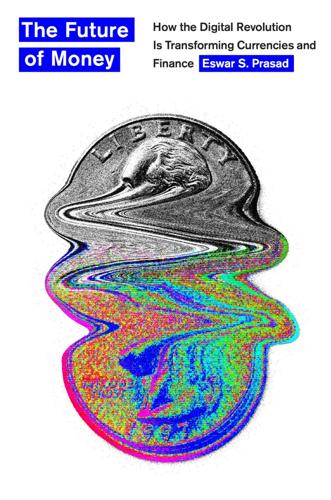
The Future of Money: How the Digital Revolution Is Transforming Currencies and Finance
by
Eswar S. Prasad
Published 27 Sep 2021
The Tether white paper, issued in June 2016, is available at “Tether: Fiat Currencies on the Bitcoin Blockchain,” Tether, https://tether.to/wp-content/uploads/2016/06/TetherWhitePaper.pdf. The rebranding of Realcoin as Tether is described in Pete Rizzo, “Realcoin Rebrands as ‘Tether’ to Avoid Altcoin Association,” Coindesk, November 20, 2014, https://www.coindesk.com/realcoin-relaunches-tether-avoid-altcoin-association. The description of Tether and the quotes draw on material posted at https://tether.to/. For a chart of Tether prices, see https://coinmarketcap.com/currencies/tether/. Various websites report divergent price histories for Tether; this seems to depend on the exchange from which they are reporting prices.
…
The larger point is that the desire to use cryptocurrencies without forsaking stability has spawned many mongrels that represent a wide range of approaches to ensuring stable values. One of the earliest stablecoins, Realcoin, was launched in early 2014. In November 2014, Realcoin rebranded itself as Tether to avoid being associated negatively with Altcoins, which were being panned at the time as weaker and less reliable cryptocurrencies than Bitcoin. Tether describes itself as a “blockchain-enabled platform designed to facilitate the use of fiat currencies in a digital manner.… Tether currencies are not money, but are digital tokens formatted to work on blockchains.”
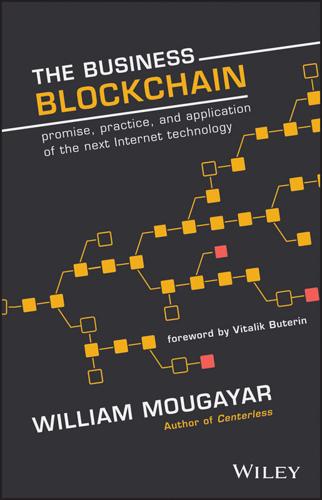
The Business Blockchain: Promise, Practice, and Application of the Next Internet Technology
by
William Mougayar
Published 25 Apr 2016
Recording the maintenance history of critical pieces of medical equipment, for example, an MRI scanner, providing a permanent audit trail. Carrying a secure wallet with our full electronic medical record in it, or our stored DNA, and allowing its access, in case of emergency. Verifying provenance on medications, to eliminate illegal drug manufacturing. “CaseCoins:” originating specific altcoins that create a cryptocurrency market around solving a particular disease, such as FoldingCoin, a project where participants share their processing power to help cure a disease, and get rewarded with a token asset.10 Energy Blockchain applications can help achieve a more efficient management of the power distribution grid, low-cost microtransactions between peers or machines, secondary markets creation, or rule-based payments.
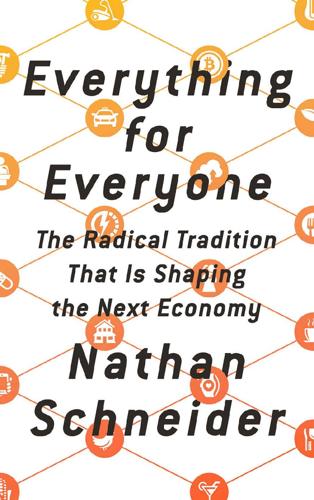
Everything for Everyone: The Radical Tradition That Is Shaping the Next Economy
by
Nathan Schneider
Published 10 Sep 2018
Nakamoto’s longing for money free from trust simply shifted the location of that trust. The blockchain technology at work in Bitcoin is flexible; it can be rearranged for cooperation rather than competition, for reputation tracking rather than anonymity, for democracy rather than oligarchy. Some early experiments along these lines, among the hundreds of “altcoins,” did away with intensive mining altogether. But unlike Bitcoin, they were short on financing and evangelists. A lot of the people I knew who had been around for the early days of cryptocurrency—software hackers who became overnight whizzes in monetary theory—were soon building Bitcoin-like systems for the very banks they thought they would utterly disrupt.
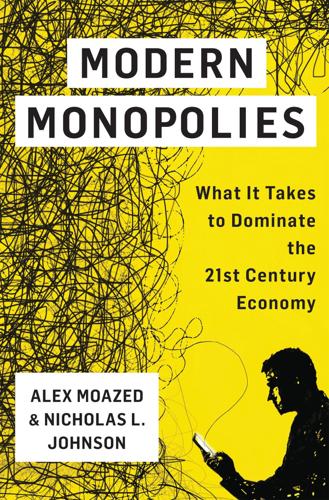
Modern Monopolies: What It Takes to Dominate the 21st Century Economy
by
Alex Moazed
and
Nicholas L. Johnson
Published 30 May 2016
Given the large (and growing) number of bitcoin miners out there, this is currently a borderline impossible task. If one miner were to gain control of a significant portion of the network, the entire blockchain would be endangered. But thus far this hasn’t been a real threat. Currently, Bitcoin is by far the largest blockchain network. However, many others (often collectively referred to altcoins) make small alterations to the Bitcoin protocol to adapt it for other uses. But as the nature of the blockchain suggests, a larger blockchain network is a more useful and more secure one. As a result, at present, Bitcoin is effectively the only game in town. However, there are signs that this could change in the near future.
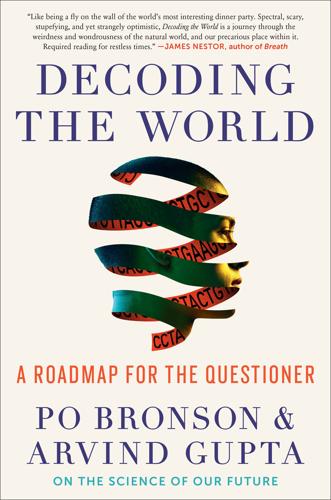
Decoding the World: A Roadmap for the Questioner
by
Po Bronson
Published 14 Jul 2020
It’s important to understand that even though Bitcoin holds no intrinsic value, it has a feature that no government currency does. Not even gold does. Which is its finite scarcity. The limit is set at 21 million coins. It will never pass that. Investors love that. That’s why they hold Bitcoin and not these alt-coin knockoffs. It’s in stark contrast to dollars. Every year, the government prints more dollars, diluting every dollar out there by that much. In whale culture, the ultimate honor is holding on for the time Bitcoin’s scarcity drives its value through the roof. They call the ability to hold on forever “diamond hands.”

Number Go Up: Inside Crypto's Wild Rise and Staggering Fall
by
Zeke Faux
Published 11 Sep 2023
GO TO NOTE REFERENCE IN TEXT inventing pop-under internet ads: Zeke Faux, “Anyone Seen Tether’s Billions?,” Bloomberg Businessweek, October 7, 2021. GO TO NOTE REFERENCE IN TEXT They initially called the project Realcoin: Pete Rizzo, “Realcoin Rebrands as ‘Tether’ to Avoid Altcoin Association,” CoinDesk, November 20, 2014. GO TO NOTE REFERENCE IN TEXT coins with Ron Paul’s face on them: Tim Murphy, “Ron Paul Coin Minter, Pot Priest, Faces 15 Years in Prison,” Mother Jones, March 21, 2011. GO TO NOTE REFERENCE IN TEXT an online currency called e-gold: “Digital Currency Business E-Gold Indicted for Money Laundering and Illegal Money Transmitting,” United States Department of Justice, April 27, 2007.
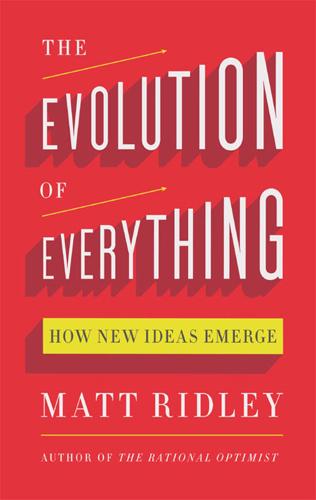
The Evolution of Everything: How New Ideas Emerge
by
Matt Ridley
As Dominic Frisby remarks, not only has bitcoin’s evolution so far been chaotic, unplanned and organic, but the people around it are ‘an eclectic mix of all sorts from the computer whizz to the con artist to the economist; from the opportunist to the altruist to the activist’. None the less, it is worth remarking just how much the humble bitcoin has achieved in a world where it has no intrinsic value whatsoever, which bodes well for future crypto-currencies online. There are now more than three hundred rival online crypto-currencies competing with bitcoins – altcoins, they are called – and though none has yet gained anything like the market share of bitcoin, it may only be a matter of time. Just imagine what might happen if decentralised crypto-currencies really do take off. If people started putting their savings in them, and financial firms started offering interesting crypto-currency-based products, governments would find their room for manoeuvre much diminished.

The Mysterious Mr. Nakamoto: A Fifteen-Year Quest to Unmask the Secret Genius Behind Crypto
by
Benjamin Wallace
Published 18 Mar 2025
He talked about his fascination with Bitcoin’s fixed money supply and with the idea that if he held a token he owned a piece of that pie. He talked about the miracle of digital scarcity: unlike everything else online, Bitcoin was something that couldn’t be copied. Granath said he’d originally made his Twitter account pseudonymous so that if Bitcoin became very valuable he wouldn’t be a target. Having earlier traded “altcoins, or shitcoins,” he was by then already “what most would call a Bitcoin Maximalist,” hodling bitcoin and disdaining all other cryptocurrencies. What made Bitcoin unique, he said, was that it didn’t have a leader. Bitcoin’s small block size meant anyone could run a network node. A more centralized cryptocurrency was merely “a database project, and can be edited by the people in control.”